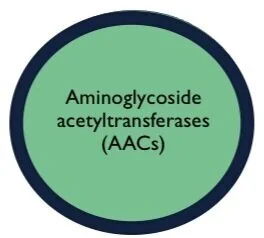Aminoglycoside acetyltransferases
We study bacterial GNATs that modify antibiotics to gain a greater understanding of how their specific amino acid residues contribute to catalysis and substrate specificity or promiscuity.
In 1965, Okamoto and Suzuki identified the first enzymes that belong to the GNAT superfamily. These enzymes were called aminoglycoside acetyltransferases. At the time, it was not known that they were related to the Gcn5 eukaryotic transcription factor, and in the late 1990s it became clear that these two proteins adopted the same protein fold. Over the past several decades, a multitude of aminoglycoside acetyltransferases have been identified and were shown to be critical for bacterial antibiotic resistance.
Antibiotic resistance is a global health threat and is predicted to become even more problematic in the near future due to the lack of new antibiotics in the pharmaceutical pipeline. Since these enzymes belong to the GNAT superfamily, we are exploring the intricate details of how they recognize a multitude of different aminoglycoside antibiotics. Once we know more about which residues are critical for activity and antibiotic binding in the acceptor site, we hope to use this information to predict which pathogenic strains will be susceptible or resistant to specific aminoglycosides based on their sequences. Ultimately, this information could be useful for antibiotic stewardship in healthcare settings.

